Go Nuts With Nut Butters!
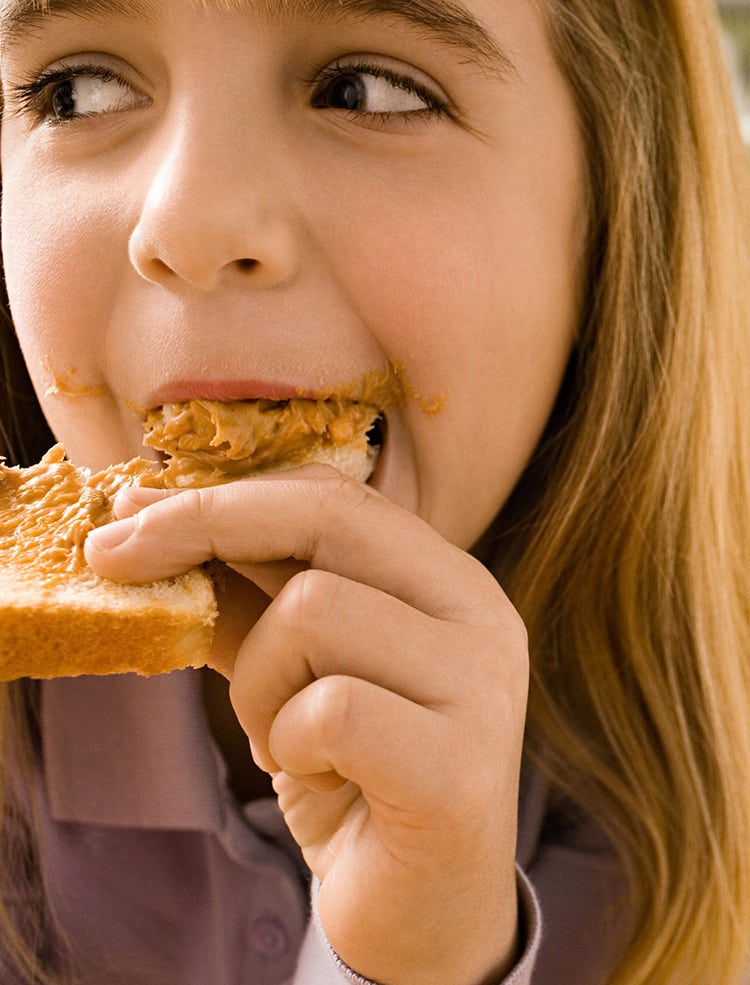
Creamy, salty and a tad sweet, peanut butter is seriously craveworthy. Yet the classic comfort food should not be the only nut (or seed) butter you try. With these protein-packed spreads so easy to make and many types available at the grocery store, it’s well worth venturing beyond your childhood favorite. Read on to learn how to do it yourself and cook with different varieties of nut and seed butters.
How to DIY

Preparing nut butters is simple. When DIYing, know that 1 cup nuts will yield ½ cup nut butter, according to CookingLight magazine. Consider combining various nuts for a more complex result. For instance, try peanut-coconut or pistachio-cashew. Remove the skins from hazelnuts, but consider leaving them on almonds to result in appealing brown flecks in the finished butter.
To enhance flavor and ease grinding, toast the nuts first, suggests personal chef Chef Shelley. Because nuts burn easily, bake five to 10 minutes at a relatively low heat, such as 350 degrees F, and watch closely. Then grind in a food processor or high-speed blender for anywhere from two to 20 minutes until the nuts release their oils and achieve a buttery consistency, say Carolyn Cesario and Julie Sullivan, authors of the forthcoming “Nut Butter: Over 50 Clean and Simple Recipes to Fuel a Healthy Lifestyle” (Andrews McMeel Publishing, September 2019). Because each nut has a specific oil and fiber profile, it will yield a unique consistency, whether thicker or more runny, says Brianne Bell, RD. To thin a nut butter out, just add oil.
If desired, finish by processing with sweeteners or seasonings, such as honey, salt, cinnamon, cardamom, pumpkin pie spice, ginger or cayenne. As an example, for a chai flavor, add cinnamon, black pepper, cloves, cardamom and a hint of sweetener. For a savory satay-inspired version, process the plain nut butter with soy sauce, rice vinegar and coconut aminos. To mimic the iconic chocolate-hazelnut spread, process hazelnut butter with melted chocolate and a bit of sea salt.
Store homemade nut butters for up to one month, covered, in the refrigerator. Meanwhile, store packaged varieties for up to several months in the fridge. (In cold storage, they will last longer than if stored at room temperature.)
Usage tips

When opening a jar of nut butter for the first time, stir vigorously. Bring to room temperature to help it spread more easily. To melt or liquify nut butter, microwave on high in 30-second intervals. As alternatives, heat in a saucepan over low, whisking; blend with liquid in a food processor; or whisk with hot liquid in a mixing bowl.
In baking, Cesario and Sullivan says, you can substitute nut butter for butter or oil in most recipes. Just be aware that because different nuts and nut butters have different amounts of fat, you can’t always swap them in one-for-one, Shelley adds. For a dairy-free substitute for heavy cream in treats and pasta sauces, CookingLight recommends whisking 1 cup water into ¼ cup nut butter (try cashew) to yield a nut cream. If swapping in cashew butter for soaked cashews in a plant-based recipe, try ½ cup cashew butter for every cup of soaked cashews, Bell suggests.
Cooking and baking ideas

Nut and seed butters add flavor, creaminess and thickness to everything from smoothies to baked goods, oatmeal, frostings, spreads, stews and sauces. For instance, combine tahini (sesame seed butter) with lemon juice, garlic and olive oil for a creamy salad dressing. Or stir canned pumpkin and pecan butter into oatmeal and season with pumpkin pie spice.
For a savory peanut soup, saute garlic, onion and bell pepper; then stir in tomato paste and peanut butter and simmer with chicken stock. Whip room-temperature cashew butter with honey and vanilla extract, and slather on banana bread or cupcakes. For a treat, Cesario and Sullivan fill dates with hazelnut butter and wrap them in prosciutto (recipe below), while Shelley pairs peanut butter with chocolate.
When liquified, nut butters are delicious toppers for frozen desserts, pancakes and waffles. Or they can be swirled into banana “nice” cream or pancake batter. Runny nut butters also can coat popcorn or serve as dipping sauces for fruits, vegetables, or grilled meats or tofu.
Health benefits

Nut butter is considered heart healthy—just like its source material. According to the Mayo Clinic, nuts are rich in several healthy components, including protein, unsaturated fats (including omega-3 fatty acids), fiber, vitamin E, plant sterols and L-arginine. Together, these nutrients may help lower LDL or “bad” cholesterol levels and inflammation and reduce the risk of blood clots. The only potential downside with nuts and nut butter is nuts’ high fat content. So be sure to spoon out just one serving: 2 tablespoons (or 1½ ounces of whole nuts).
A rainbow of nut butters
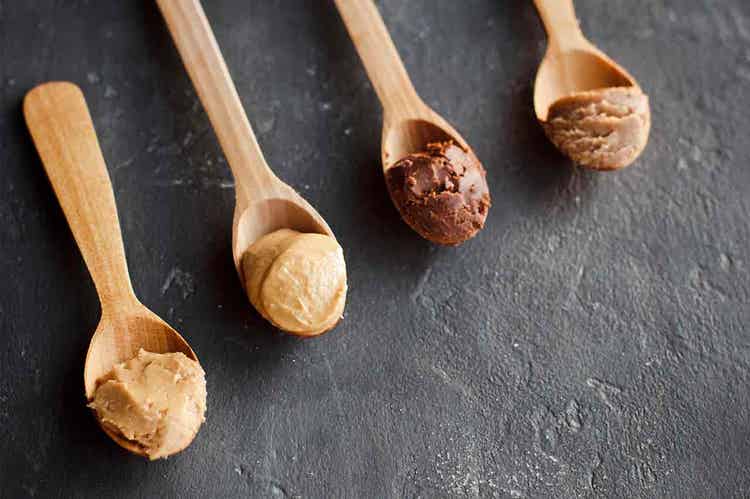
Try the wide variety of nut and seed butters. While some are ideal toast toppers, others might become staples in your cooking and baking.
- Beyond PB&J, try salty-sweet, light brown, protein-rich peanut butter in baked goods and savory Asian sauces and African stews.
- Extra-nutty, slightly sweet and rich almond butter is adaptable. Try it in sauces, soups, dressings, smoothies and oatmeal, and also on sandwiches.
- Lighter in hue and smooth in texture, cashew butter is a tad sweet, plus mild and versatile.
- Try pairing slightly bitter walnut and hazelnut butters with sweeter ingredients, such as honey or chocolate.
- Sweet, dark brown, hearty pecan butter is delicious smeared atop banana bread.
- Pistachio butter is slightly sweet, with an appealing green hue. Crumbly and a bit dry, it can be combined with cream cheese or an oilier nut butter.
- Bright white, slightly fruity coconut butter hardens below room temperature. Melt it before using, or incorporate into baked goods and smoothies.
- Gray-beige, smooth sunflower seed butter is ideal for anyone with nut allergies.
- Sesame seed butter (tahini) is light-colored, savory, slightly bitter and well-suited for salad dressings, hummus and baking.
- Pricy macadamia nut butter is sweet, high in fat and thin; chill to thicken.
- Soynut butter, made with roasted soybeans, is high in fiber and protein.
RECIPES
Basic Nut Butter
The concept behind making nut butters is pretty simple: Just blend the nuts until they reach the creaminess you desire. The process is the same for all nuts. You should make nut butter in small batches to get the best results and to avoid burning out your blender or food processor. If you prefer it a bit chunky, as I do, a food processor works well, or you can use a blender for a finer, smoother consistency. I have made nut butter in a food processor, a Vitamix, and my Blendtec using the Twister Jar.
Makes ½ cup
INGREDIENTS
- 1 cup nuts
DIRECTIONS
- Grind the nuts in a food processor or a high-powered blender. The food processor requires a little more time, but you won’t have to scrape down the sides as often, and it’s easier to clean. Both work equally well; you simply need to decide which one is better for you.
- Blend until the butter is smooth, scraping down the sides of the canister periodically. The time this takes depends on the nuts. Brazil nuts, macadamias, peanuts, pecans, and walnuts all take about five minutes. Almonds, hazelnuts, pistachios, and sunflower seeds can take up to 20 minutes. For those that take longer, I suggest pausing the blending process every five minutes to give the machine a break and allow the nuts to release some of their oils.
- Transfer the butter to an airtight container for storage.
VARIATIONS: If you want to add flavorings, such as oil, sea salt, or sweetener, do so after you have made the nut butter so that you’ll know what your base consistency and flavor is. Some suggestions are ½ teaspoon sea salt; 1 teaspoon of sweetener, such as pure maple syrup or raw honey; or ½ to 1 tablespoon of oil (I like to use coconut, grapeseed, or olive).
Recipe from “DIY Nut Milks, Nut Butters & More,” copyright © Melissa King, 2014. Reprinted by permission of the publisher, The Experiment. Available wherever books are sold. theexperimentpublishing.com
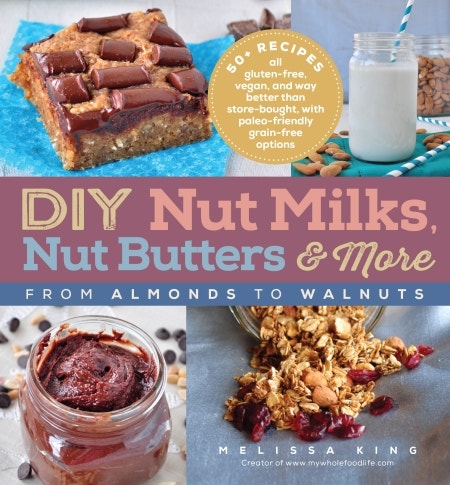
Hazelnut & Prosciutto Stuffed Dates
Makes 12 dates
INGREDIENTS
- 12 pitted Medjool dates
- ¼ cup hazelnut butter
- 2 ounces prosciutto (approximately 4 slices)
- 12 fresh basil leaves
- Ground cayenne pepper, for dusting
DIRECTIONS
- Preheat oven to 350 degrees F.
- Slice the date open lengthwise, being sure not to cut all of the way through.
- Place a dollop of hazelnut butter inside each, approximately ½ teaspoon per date.
- Sprinkle each with a light dusting of cayenne, and top with one fresh basil leaf.
- Slice prosciutto into 1-inch long strips. Wrap a slice of prosciutto around each date, and insert a toothpick to secure.
- Place prosciutto-wrapped dates on a baking sheet. Bake for four to five minutes, or until the prosciutto is warm and slightly crispy.
Recipe from “Nut Butter; Over 50 Clean and Simple Recipes to Fuel a Healthy Lifestyle,” copyright © Carolyn Cesario and Julie Sullivan, 2019. Reprinted by permission of the publisher, Andrews McMeel Publishing. Available wherever books are sold.
Almond Butter-Banana Pancakes or Waffles
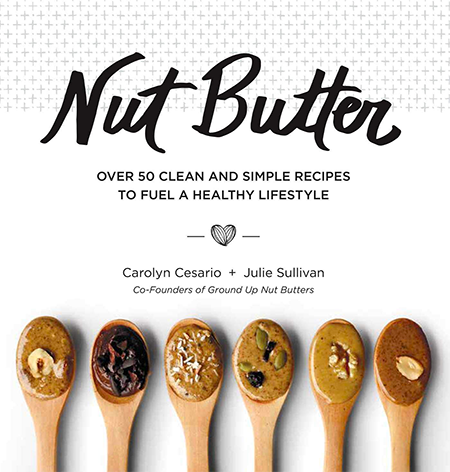
Aside from being hearty pre-workout or take-along meals, pancakes and waffles make for convenient kid-friendly breakfasts. We like to make them ahead of time and freeze them, reheating in the toaster each morning and serving with fruit. These are quite substantial and mildly sweet, which makes kids (and parents!) happy. Sugar is optional in this recipe; use it only if you won’t be eating yours with syrup or jam. These get super crispy on the outside thanks to the almond meal but stay quite moist and tender on the inside.
Makes: 4 waffles or 8 pancakes
INGREDIENTS
- 1 cup almond milk
- 1 ripe banana
- 2 tablespoons almond butter
- 2 tablespoons chia seeds
- 2 tablespoons sugar, optional
- ½ teaspoon vanilla extract
- ¾ cup whole wheat pastry flour
- ½ cup almond meal or additional pastry flour
- 2 teaspoons baking powder
- ¼ teaspoon ground cinnamon
- ⅛ teaspoon salt
- Oil, for greasing
DIRECTIONS
- Preheat a griddle over medium-high heat (or preheat a waffle iron).
- Combine the almond milk, banana, almond butter, chia seeds, sugar (if using), and vanilla in a blender. Puree until smooth. (For pancakes, add ¼ cup water.)
- Combine the flour, almond meal, baking powder, cinnamon, and salt in a medium bowl. Pour the wet ingredients into the dry and fold until just combined.
- For waffles: Grease your waffle iron. Add ½ cup batter to the center of your iron. Cook for about 6 minutes, or until cooked through. Repeat with remaining batter and serve.
- For pancakes: Grease the griddle. Add ¼ cup batter and cook until bubbles have formed and popped (about 2 minutes); flip and cook another 2 to 3 minutes, until the center is cooked. Repeat with the remaining batter and serve.
Recipe from “The No Meat Athlete Cookbook: Whole Food, Plant-Based Recipes to Fuel Your Workouts—and the Rest of Your Life,” © Matt Frazier and Stepfanie Romine, 2017. Photographs © Ken Carlson, Waterbury Publications Inc. Reprinted by permission of the publisher, The Experiment. Available wherever books are sold. theexperimentpublishing.com
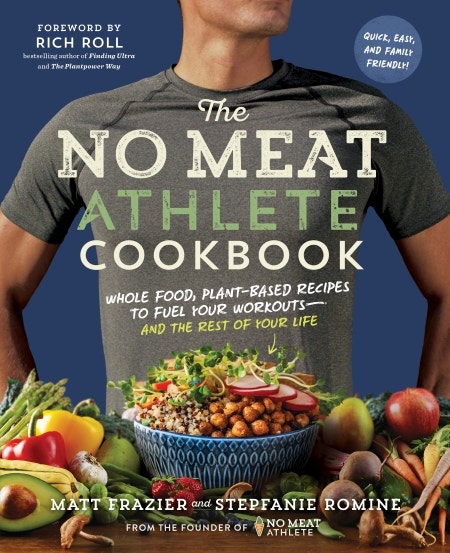
Video credit: Elen_Jasmine, Getty Images
Photo credit: Image Source, Getty Images; Remi Yuan, Unsplash; belchonock, Getty Images; olga pink, Adobe Stock; iuliia_n, Adobe Stock; mikhail_kayl, Adobe Stock